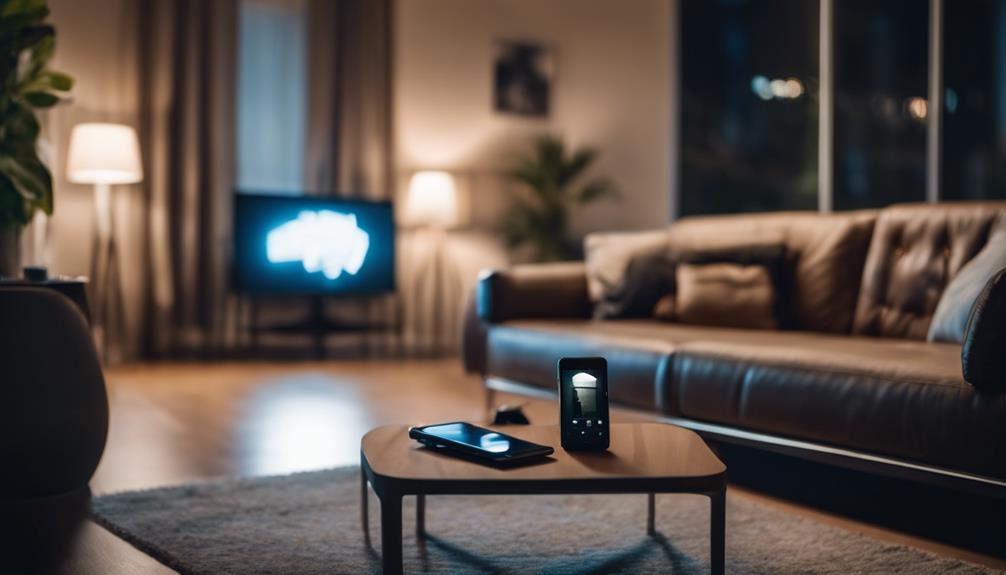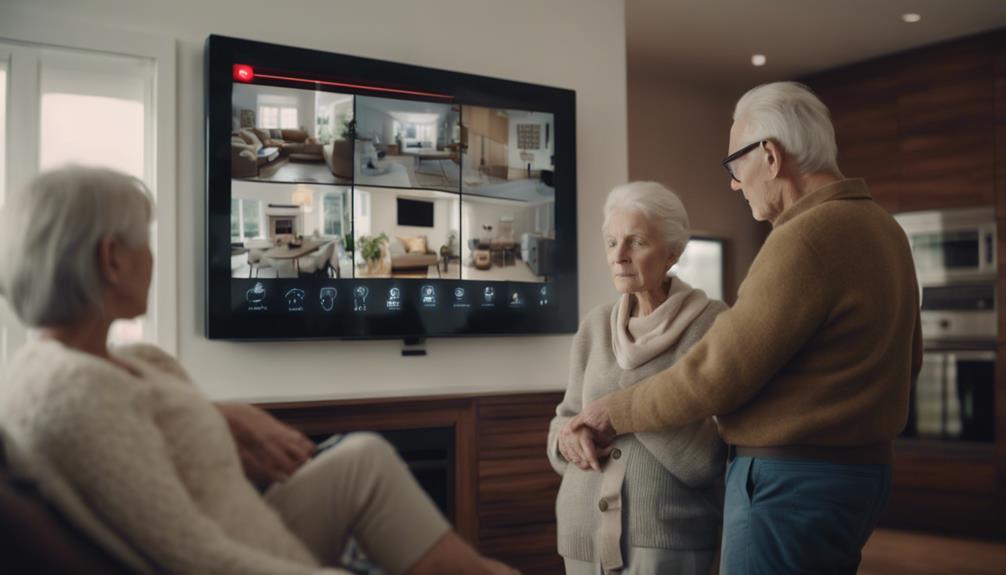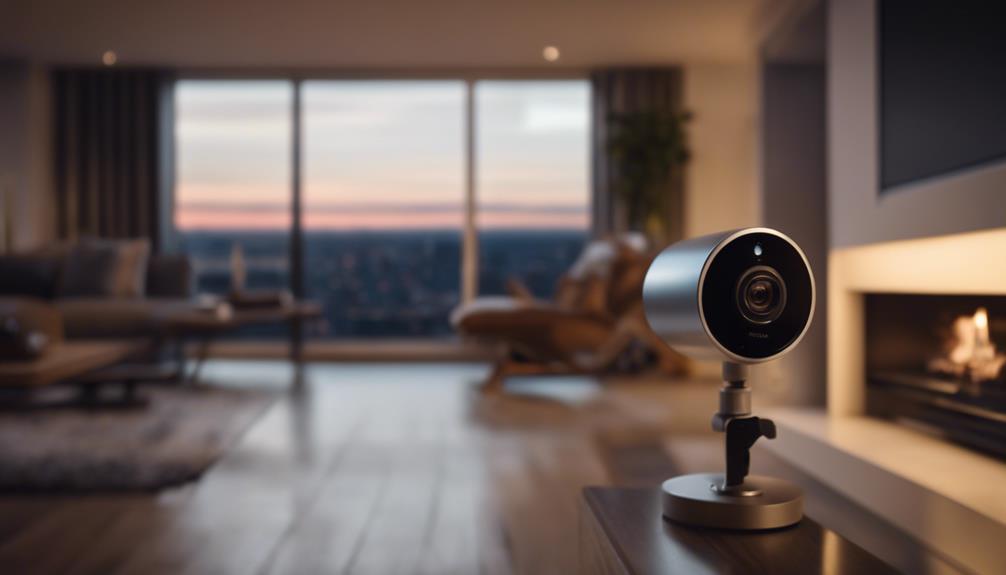
Brainstorm Security Shop

For Orders Over $199

On Any Of Our Products

Details On Refund Page
As you consider enhancing your home security, have you ever wondered how a motion sensor system might fit into your daily life and safety strategy? These systems use advanced technology to detect movement, instantly notifying you of any unusual activity, which can be a game-changer in preventing intrusions. Whether you’re away from home or asleep, you’re covered. But how do these sensors differentiate between a potential threat and minor movements, like your pet roaming around at night? This question underscores the importance of understanding the sensitivity settings and technological nuances that could significantly impact your peace of mind and privacy.

Motion sensors, crucial to enhancing your home security, detect any unexpected movement around your property. You’ll appreciate how they serve as the eyes of your security system, especially when you’re not around. These devices are designed to be highly sensitive to physical changes in their environment, which means they can pick up even the slightest movements. This sensitivity ensures that any potential threats or intruders don’t go unnoticed.
When a motion sensor is triggered, it sends an alert to your security system’s control panel, which in turn can notify you via your smartphone or other connected devices. This quick alert mechanism allows you to respond promptly, whether that means checking your security cameras, contacting law enforcement, or simply verifying if it’s a false alarm caused by a pet or family member.
Besides security, motion sensors can also help you manage energy efficiency in your home. They can be integrated with your home automation system to control lighting, heating, or cooling based on occupancy. Imagine walking into a room and the lights turn on automatically, or the thermostat adjusts itself when no movement is detected, helping you save on your energy bills. This dual functionality makes motion sensors an invaluable part of your home security and management system.
Exploring the different types of motion sensors can help you tailor your home security system to meet your specific needs. You’ll find several main types on the market, each with unique characteristics and sensing mechanisms.
Firstly, there are passive infrared (PIR) sensors. These are perhaps the most common and work by detecting body heat. When someone enters a room, the sensor notes the change in infrared energy and triggers the alarm or lights. PIR sensors are ideal for indoor use because they’re less likely to be activated by small animals.
Next, ultrasonic sensors emit high-frequency sound waves and measure the reflection off a moving object. They cover a broader area compared to PIR sensors but can be more sensitive to environmental factors like wind or temperature changes.
Microwave sensors, another type, send out microwave pulses and measure the reflection from moving objects. They’re more expensive but can detect motion through walls, making them useful for comprehensive coverage.
Lastly, dual technology sensors combine features of two different sensors, typically PIR and microwave, to reduce false alarms. They only trigger when both sensor types detect motion, providing a more reliable detection system.
Choosing the right type of motion sensor depends on your specific security requirements and the layout of your property.
Installing motion sensors enhances your home’s security by immediately alerting you to any unexpected activity. When you’re away or asleep, these sensors act as your eyes, providing real-time updates if something’s amiss. This rapid notification allows you to respond swiftly, whether that means checking your surveillance feed, contacting authorities, or simply speaking through a two-way communicator to scare off intruders.
Moreover, the presence of motion sensors can deter potential burglars. Most criminals scout for easy targets, and a well-equipped home falls off their radar. You’ll enjoy peace of mind knowing that the mere existence of these sensors increases your safety, reducing the likelihood of break-ins.
Motion sensors also contribute to energy efficiency in your home. They can trigger lights only when needed, saving you money on your energy bills and extending the life of your bulbs. Additionally, integrating these sensors with other smart home devices enhances overall convenience and control, allowing you to manage your security system remotely.
You’ll find that having motion sensors not only secures your property but also adds a layer of automation that simplifies your daily routines. It’s a smart investment, safeguarding both your peace of mind and your pocket.
Let’s dive into the steps involved in setting up your motion sensor security system.
First off, you’ll need to decide on the placement of your motion sensors. Common areas include near entry points such as doors and windows or hallways leading to central areas of your home. Ensure these spots offer a clear line of sight for optimal detection.
Next, mount the sensors according to the manufacturer’s instructions. Most systems come with all necessary mounting hardware and may use screws or adhesive strips for installation. You’ll want to place them at the recommended height, usually around 6 to 8 feet above the floor, to maximize coverage and minimize false alarms.
After mounting, it’s time to connect your sensors to the main control panel. This could be through wires (for wired systems) or wirelessly. If you’re handling a wireless setup, ensure that your sensors are within the recommended range of your control panel to maintain a strong connection.

Now that you’ve set up your motion sensors, consider the key features that can enhance your home security system’s effectiveness. First, think about the detection range. A wider range means your sensor can cover more area, but you’ll need to balance this with the layout of your space to avoid false alarms. Look for models that offer adjustable sensitivity settings to tailor the system to your home’s specific needs.
Next, evaluate the sensor’s response time. A quicker response can make a big difference in security scenarios, enabling faster alerts and quicker action. You’ll also want to consider the type of technology used. Passive infrared (PIR) sensors are common and cost-effective, but dual technology sensors, which combine PIR with other methods like microwave or ultrasonic, can offer more accuracy and reduce false alarms.
Battery life is another crucial factor. Choose sensors with long-lasting batteries to minimize maintenance and ensure continuous protection. Some models come with low battery indicators, which can be a handy reminder to replace or recharge batteries without compromising your security.
Lastly, make sure the design of the sensor suits your home’s aesthetics and is discreet enough not to disrupt your decor. Opting for weather-resistant models can also be beneficial if you’re installing sensors outdoors.
Integrating your motion sensors with smart home devices can significantly enhance your security system’s functionality and convenience. By connecting these sensors to other elements like smart lights, cameras, and alarm systems, you create a cohesive, responsive unit that not only alerts you to potential threats but also acts to deter them.
For instance, when a motion sensor detects movement, it can trigger your smart lights to turn on automatically, illuminating your property and potentially scaring off intruders. Simultaneously, your smart cameras can begin recording, ensuring that you capture crucial footage that could be used for identification or evidence if a break-in occurs.
You can also set up notifications to be sent directly to your smartphone or another device, allowing you to monitor your home in real time, no matter where you are. This integration offers you peace of mind, knowing that your home is actively monitored and that you’ll be immediately informed of any suspicious activity.
Moreover, these smart integrations can be managed and customized through a single app. This central control makes it easier for you to adjust settings, check statuses, and review notifications efficiently, which streamlines your home security management without needing to juggle multiple systems or interfaces.

While integrating your motion sensors with smart home devices enhances functionality, maintaining and troubleshooting these systems ensures their reliability and effectiveness. It’s vital you routinely check the batteries or power supply of your sensors. Most issues stem from power failures, so ensuring your sensors are adequately powered can save you a headache later.
You’ll also want to regularly clean your sensors. Dust, spider webs, or other debris can block the sensor’s view, leading to false alarms or no detection at all. Use a soft cloth to gently wipe the lenses; this simple act can significantly improve performance.
If you’re experiencing false alarms, consider the placement of your sensors. Sometimes, heat sources like radiators or vents near sensors can trigger them. Adjusting their position might solve this problem. Also, check if there are objects creating moving shadows or reflections that are misinterpreted as intruders.
For technical issues that aren’t resolved through basic maintenance, refer to the manufacturer’s manual or contact their support team. They can offer specific advice or suggest if a professional technician needs to look at the system. Keeping a log of any issues and how they were resolved can be incredibly helpful for future troubleshooting.

Analyzing the costs involved in installing and maintaining a home security system with motion sensors can help you budget effectively. Initially, you’ll face the installation cost, which varies depending on whether you choose a DIY system or a professionally installed setup. DIY kits can range from $50 to several hundred dollars, while professional services might start around $99 and can escalate well beyond $1,000, especially if your home is large or requires customized features.
Ongoing costs should also be considered. These include monitoring services, which typically cost between $15 and $50 monthly. Some systems offer advanced features like mobile alerts and remote control, which could add to your monthly bill. Don’t forget about the potential need for maintenance or replacement of components, such as batteries for wireless sensors, which might need changing every few years. These expenses are usually minimal but can add up over time.
Additionally, consider the indirect costs such as increased energy usage from the system and possible adjustments to your home insurance premiums. Some insurers offer discounts for homes with security systems, potentially offsetting some of the initial outlay.
After considering the costs, you’ll need to choose a system that meets both your security needs and budget constraints. It’s essential to assess the features each system offers. Do you need cameras, or are motion sensors enough? Would you prefer a system that connects to your smartphone for real-time alerts?
Look for systems with good reviews and reliable customer support. It’s crucial that help is available when you need it, especially during the setup or if you encounter any issues later. Consider the ease of installation too. Some systems are DIY-friendly, while others might require professional installation, adding to the cost.
You should also think about scalability. As your needs change, you might want to expand your security system. Make sure the system you choose can grow with you, whether that means adding more sensors or upgrading the software.
Finally, check the system’s compatibility with other smart home devices. Integrating your security system with other smart technologies can enhance your home’s overall safety and efficiency.
Choosing the right home security system isn’t just about the initial cost; it’s about ensuring you’re investing in a solution that provides peace of mind and adapts to your future needs.

Now that you’re familiar with the ins and outs of motion-sensor security systems, you’re primed to choose the right setup for your home. Remember, it’s not just about safety; it’s also about convenience and efficiency.
Evaluate the features, consider integration with your smart devices, and don’t forget the importance of straightforward maintenance. Investing wisely in a system that fits your needs will ensure you’ve taken a significant step toward enhancing your home’s security and your peace of mind.

Brainstorm Security Shop
1867 Caravan Trail
Ste 105
Jacksonville, FL 32216
Call us toll free: (800) 859-5566